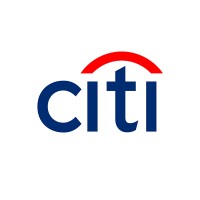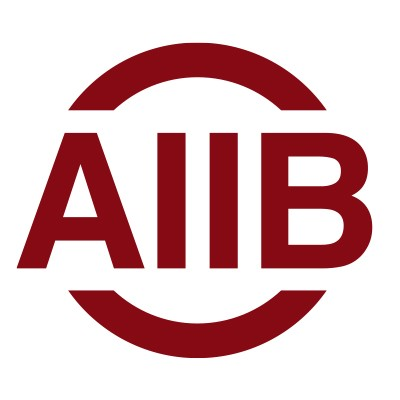Digital Bonds and Green Energy: A New Era in Infrastructure Investment
August 28, 2024, 10:32 pm

Location: India, Maharashtra, Mumbai
Employees: 10001+
Founded date: 1982
Total raised: $2.02B
The financial landscape is shifting. Digital bonds are emerging as a powerful tool for investment. The Asian Infrastructure Investment Bank (AIIB) recently made headlines by issuing its first digital bond, raising $300 million. This marks a significant milestone in the world of finance. It’s not just a transaction; it’s a leap into the future.
Digital bonds are like the new kids on the block. They are debt instruments issued on a blockchain or distributed ledger. This technology offers transparency and security. The AIIB’s bond is dollar-denominated and rated 'AAA' by major rating agencies. This high rating indicates strong confidence in the bank’s ability to meet its obligations. The funds raised will support AIIB’s sustainable bond program, which aims to finance projects that benefit the environment.
Citigroup and BMO Capital Markets played crucial roles as bankers for this transaction. Their involvement adds credibility to the issuance. The AIIB is not just another financial institution; it’s a multilateral development bank focused on improving infrastructure across Asia. By embracing digital bonds, it sets a precedent for other institutions. This move could inspire a wave of similar initiatives.
Meanwhile, the infrastructure sector is buzzing with activity. hBits, a fractional ownership platform, is seeking a license from the Securities and Exchange Board of India (SEBI) for small and medium REITs (SM REITs). This is a strategic move. The company plans to launch its first SM REIT offering in the third quarter of the financial year. It aims to transition its existing properties into SM REITs gradually. The goal? To increase its total assets under management to Rs 100 billion. This ambition reflects a growing trend in real estate investment. Fractional ownership is gaining traction, allowing more investors to participate in the market.
In the energy sector, JSW Neo Energy is making waves. The company recently secured a letter of award for a 200 MW wind-solar hybrid project from the Maharashtra State Electricity Distribution Company (MSEDCL). This project is a testament to the growing importance of renewable energy. It highlights the shift towards sustainable power sources. The hybrid capacity will contribute significantly to the company’s total locked-in generation capacity, which now stands at 17.2 GW. This includes 2.9 GW of hybrid capacity. The energy landscape is evolving, and companies like JSW are at the forefront of this change.
The Chatterjee Group, a US-based private equity firm, is also eyeing opportunities in India. It seeks to partner with Indian state-run companies for a $10 billion oil-to-chemicals project. This ambitious initiative is set to take place in Cuddalore, Tamil Nadu. The discussions with Oil & National Gas Corp. and Hindustan Petroleum Corp. signal a strong interest in expanding the oil and chemicals sector in India. Such collaborations can lead to significant advancements in technology and infrastructure.
These developments are not isolated. They reflect a broader trend in global finance and infrastructure investment. Digital bonds, renewable energy projects, and strategic partnerships are reshaping the landscape. Investors are increasingly looking for sustainable options. They want to support initiatives that align with their values. This shift is crucial for the future of investment.
The AIIB’s digital bond issuance is a game-changer. It opens doors for other financial institutions to explore similar avenues. The use of blockchain technology in bond issuance could streamline processes and reduce costs. This innovation could attract a new wave of investors who are tech-savvy and environmentally conscious.
hBits’ pursuit of a SEBI license for SM REITs is another indicator of changing investment patterns. As more investors seek fractional ownership opportunities, the real estate market will likely become more accessible. This democratization of investment can lead to increased participation from a diverse range of investors.
JSW Neo Energy’s hybrid project exemplifies the potential of combining renewable energy sources. Wind and solar power can complement each other, providing a more stable energy supply. This project not only contributes to energy security but also aligns with global sustainability goals. As countries strive to reduce carbon emissions, projects like this will play a vital role.
The Chatterjee Group’s initiative in the oil-to-chemicals sector highlights the importance of collaboration. Partnerships between private equity firms and state-run companies can drive innovation. They can also lead to the development of new technologies that enhance efficiency and reduce environmental impact.
In conclusion, the financial and infrastructure sectors are undergoing a transformation. Digital bonds, renewable energy projects, and strategic partnerships are paving the way for a sustainable future. The AIIB’s digital bond issuance is a significant step forward. It sets a benchmark for others to follow. As investment trends evolve, the focus on sustainability and innovation will only grow stronger. The future is bright for those willing to embrace change. The landscape is ripe for investment, and the opportunities are boundless.
Digital bonds are like the new kids on the block. They are debt instruments issued on a blockchain or distributed ledger. This technology offers transparency and security. The AIIB’s bond is dollar-denominated and rated 'AAA' by major rating agencies. This high rating indicates strong confidence in the bank’s ability to meet its obligations. The funds raised will support AIIB’s sustainable bond program, which aims to finance projects that benefit the environment.
Citigroup and BMO Capital Markets played crucial roles as bankers for this transaction. Their involvement adds credibility to the issuance. The AIIB is not just another financial institution; it’s a multilateral development bank focused on improving infrastructure across Asia. By embracing digital bonds, it sets a precedent for other institutions. This move could inspire a wave of similar initiatives.
Meanwhile, the infrastructure sector is buzzing with activity. hBits, a fractional ownership platform, is seeking a license from the Securities and Exchange Board of India (SEBI) for small and medium REITs (SM REITs). This is a strategic move. The company plans to launch its first SM REIT offering in the third quarter of the financial year. It aims to transition its existing properties into SM REITs gradually. The goal? To increase its total assets under management to Rs 100 billion. This ambition reflects a growing trend in real estate investment. Fractional ownership is gaining traction, allowing more investors to participate in the market.
In the energy sector, JSW Neo Energy is making waves. The company recently secured a letter of award for a 200 MW wind-solar hybrid project from the Maharashtra State Electricity Distribution Company (MSEDCL). This project is a testament to the growing importance of renewable energy. It highlights the shift towards sustainable power sources. The hybrid capacity will contribute significantly to the company’s total locked-in generation capacity, which now stands at 17.2 GW. This includes 2.9 GW of hybrid capacity. The energy landscape is evolving, and companies like JSW are at the forefront of this change.
The Chatterjee Group, a US-based private equity firm, is also eyeing opportunities in India. It seeks to partner with Indian state-run companies for a $10 billion oil-to-chemicals project. This ambitious initiative is set to take place in Cuddalore, Tamil Nadu. The discussions with Oil & National Gas Corp. and Hindustan Petroleum Corp. signal a strong interest in expanding the oil and chemicals sector in India. Such collaborations can lead to significant advancements in technology and infrastructure.
These developments are not isolated. They reflect a broader trend in global finance and infrastructure investment. Digital bonds, renewable energy projects, and strategic partnerships are reshaping the landscape. Investors are increasingly looking for sustainable options. They want to support initiatives that align with their values. This shift is crucial for the future of investment.
The AIIB’s digital bond issuance is a game-changer. It opens doors for other financial institutions to explore similar avenues. The use of blockchain technology in bond issuance could streamline processes and reduce costs. This innovation could attract a new wave of investors who are tech-savvy and environmentally conscious.
hBits’ pursuit of a SEBI license for SM REITs is another indicator of changing investment patterns. As more investors seek fractional ownership opportunities, the real estate market will likely become more accessible. This democratization of investment can lead to increased participation from a diverse range of investors.
JSW Neo Energy’s hybrid project exemplifies the potential of combining renewable energy sources. Wind and solar power can complement each other, providing a more stable energy supply. This project not only contributes to energy security but also aligns with global sustainability goals. As countries strive to reduce carbon emissions, projects like this will play a vital role.
The Chatterjee Group’s initiative in the oil-to-chemicals sector highlights the importance of collaboration. Partnerships between private equity firms and state-run companies can drive innovation. They can also lead to the development of new technologies that enhance efficiency and reduce environmental impact.
In conclusion, the financial and infrastructure sectors are undergoing a transformation. Digital bonds, renewable energy projects, and strategic partnerships are paving the way for a sustainable future. The AIIB’s digital bond issuance is a significant step forward. It sets a benchmark for others to follow. As investment trends evolve, the focus on sustainability and innovation will only grow stronger. The future is bright for those willing to embrace change. The landscape is ripe for investment, and the opportunities are boundless.


